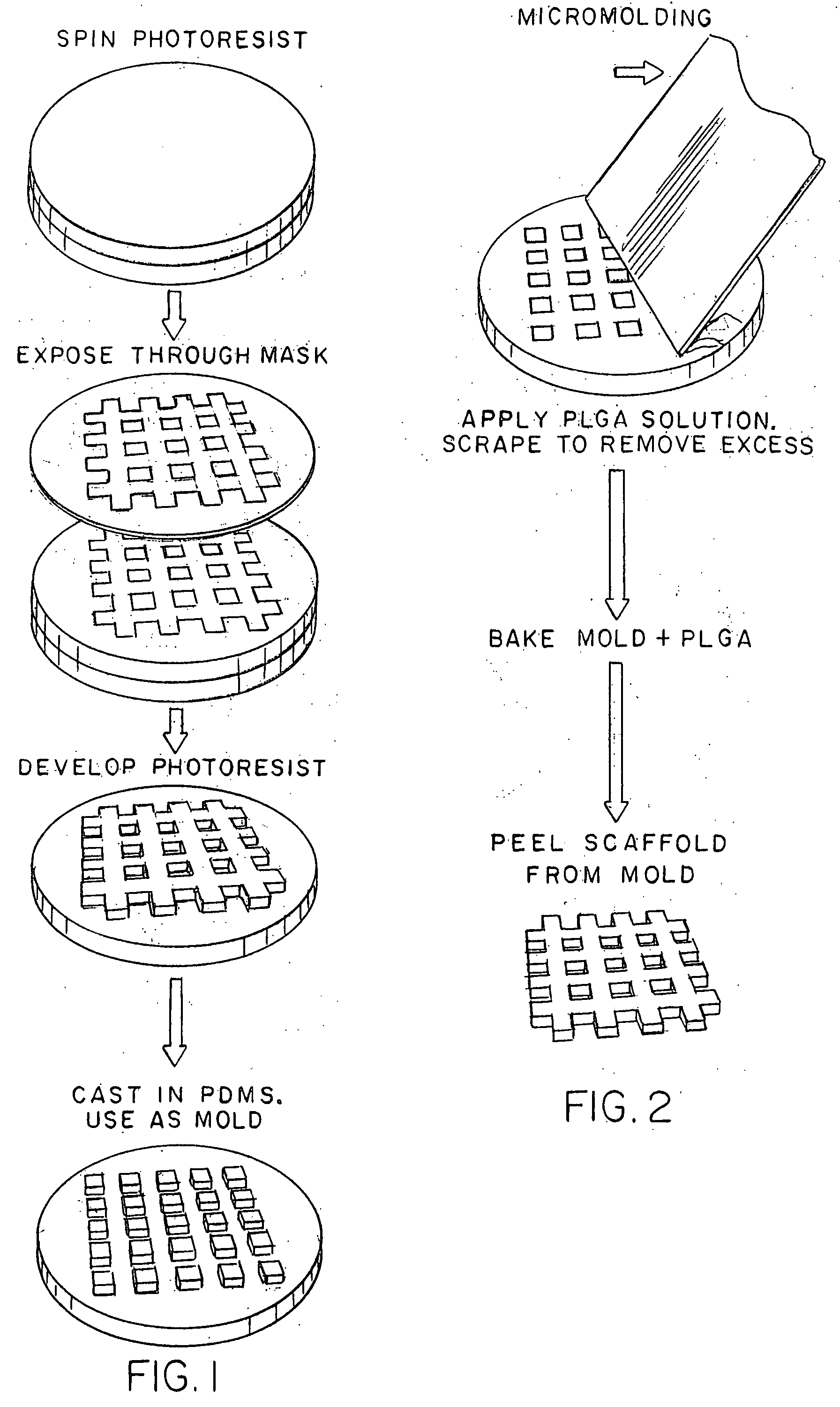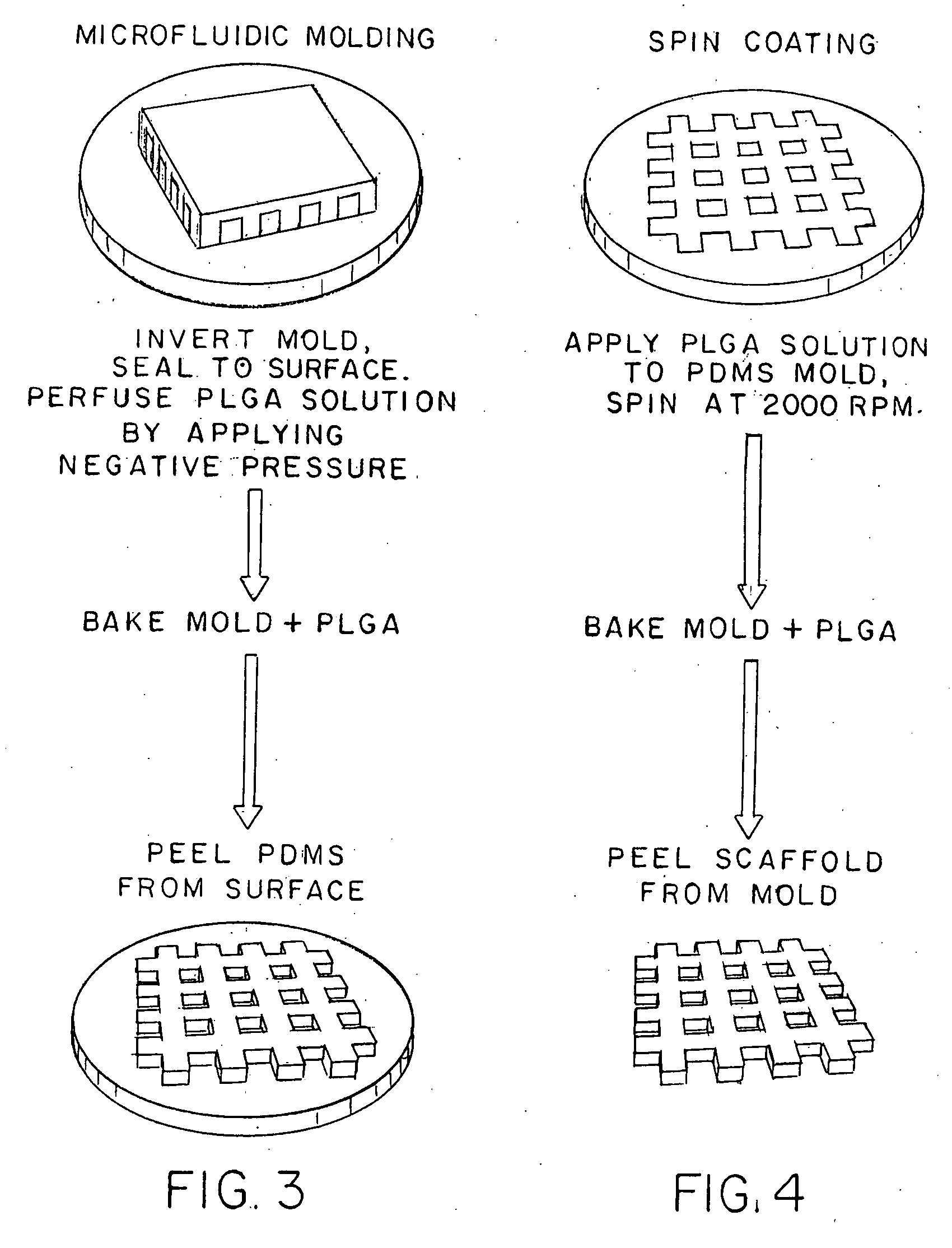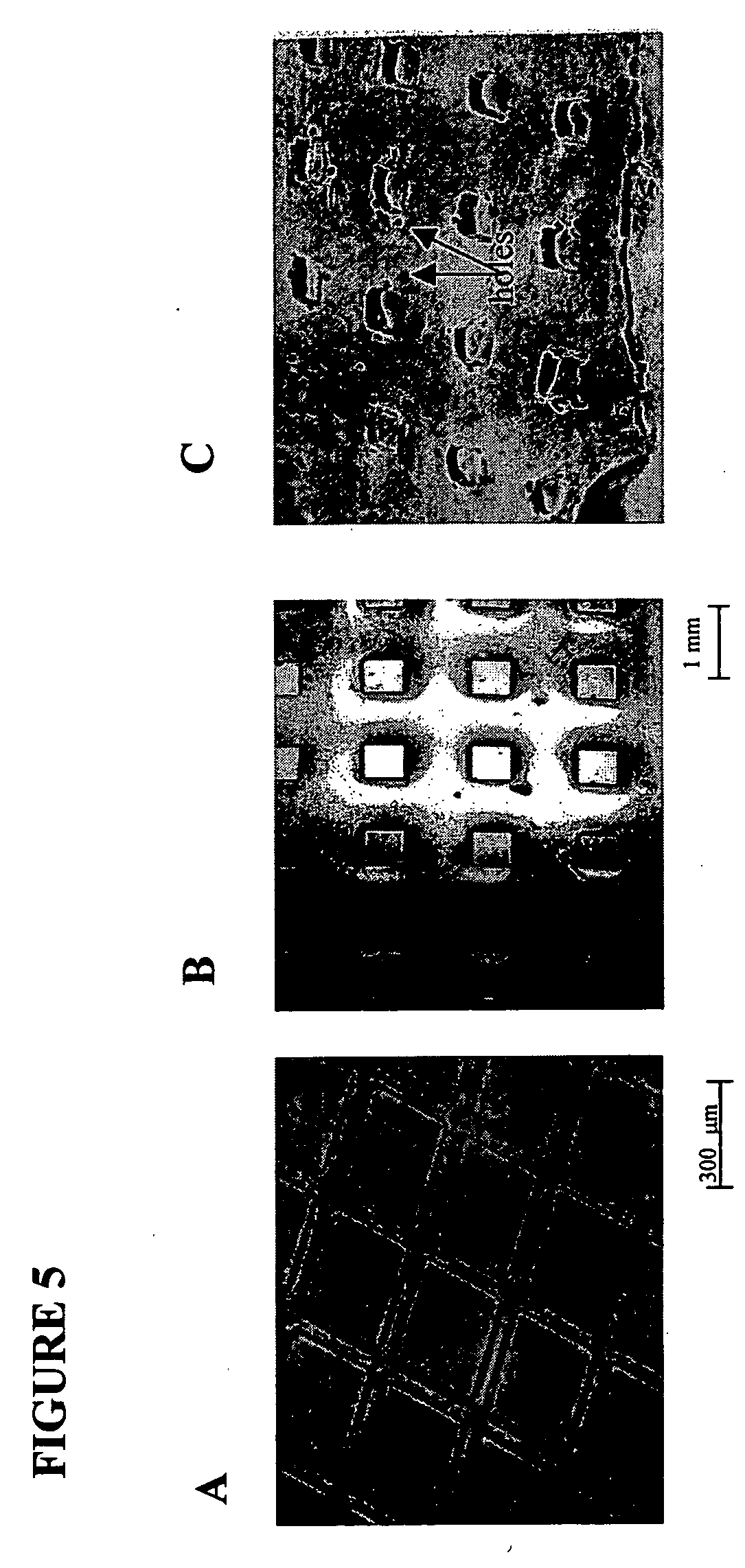Microfabricated biopolymer scaffolds and method of making same
a biopolymer and micro-fabricated technology, applied in the field of micro-fabricated biopolymer scaffolds and the same making method, can solve the problems of complex objects, lack of organization of scaffolds, and inability to create most tissues, and achieve rapid micro-fabrication of scaffolds and iterative experimentation
- Summary
- Abstract
- Description
- Claims
- Application Information
AI Technical Summary
Benefits of technology
Problems solved by technology
Method used
Image
Examples
example 1
[0040] Micromolding of PLGA scaffolds. The micromolding technique is essentially solvent-casting on a PDMS mold. Many PLGA scaffolds can be produced with a single PDMS mold. The thickness of the resulting PLGA scaffold is determined by the height of the features on the photolithographic master (˜30 microns in this example) and by the concentration of polymer in the solution. The feature height on the master can in principle be a few microns. However, thin membranes are fragile and are difficult to manipulate manually. It was empirically noted that scaffold heights of greater than ˜30 microns yielded a scaffold with sufficient integrity to manipulate. The optimal PLGA concentration for use with this method was found to be around 10%-15%. At this concentration, the viscosity is high enough (around 100 cp) to allow the polymer solution to permeate the trenches of the PDMS mold when placed under vacuum. It was also observed that the solvent caused the PDMS mold to swell slightly. This l...
example 2
[0041] Microfluidic molding. The second variation was based on microfluidic flow. This technique took advantage of the microchannels created when a PDMS mold was reversibly sealed to a substrate. Microchannels were filled with a PLGA solution by application of negative pressure. In theory, the resolution of this technique is only limited by the resolution of the PDMS mold and hence the master. Practically, we found it difficult to mold patterns with small channel dimensions because the negative pressure that must be applied to fill the channels was excessive. Once the PLGA was cured, the PDMS was carefully removed to avoid damaging the thin structures. The average height of the scaffolds we fabricated was 10 microns. An typical scaffold obtained using this technique is shown in FIG. 5B. Unlike the other methods, microfluidic patterning could not be used to fabricate three dimensional structures because the polymer solution adhered strongly to the underlying substrate and could not b...
example 3
[0042] Spin coating. This method utilized a photoresist spin-coater to create a polymer layer that was thinner than the features on the master. A 5% PLGA solution was optimal for this method because the time required to fill the mold was compatible with the spinning time (˜30 seconds). Highly viscous solutions did not completely fill the mold because the solvent evaporated during spinning before the polymer solution could permeate the PDMS structure. With a fixed polymer concentration, the height of the scaffold can be regulated by varying the spinning speed. Typically, a speed of 2000 rpm yielded membranes with an average height of 7 microns. A typical scaffold produced using this method is shown in FIG. 5C. Meniscus effects were observed in regions where the polymer was in contact with the hydrophobic PDMS mold, producing non-uniform scaffold heights. Additionally small holes were observed on the membrane surfaces and hypothesize that bubbles were introduced through rapid solvent ...
PUM
| Property | Measurement | Unit |
|---|---|---|
| Time | aaaaa | aaaaa |
| Pressure | aaaaa | aaaaa |
| Structure | aaaaa | aaaaa |
Abstract
Description
Claims
Application Information
 Login to View More
Login to View More - R&D
- Intellectual Property
- Life Sciences
- Materials
- Tech Scout
- Unparalleled Data Quality
- Higher Quality Content
- 60% Fewer Hallucinations
Browse by: Latest US Patents, China's latest patents, Technical Efficacy Thesaurus, Application Domain, Technology Topic, Popular Technical Reports.
© 2025 PatSnap. All rights reserved.Legal|Privacy policy|Modern Slavery Act Transparency Statement|Sitemap|About US| Contact US: help@patsnap.com



